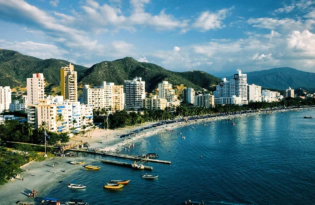Looking for an Employer of Record in the Philippines? Here’s What You Need to Know
Learn what a Workforce Management Platform in the Philippines does. We outline the key services, including hiring, onboarding, paying, and managing employees.

The Philippines has a strong and resilient labor market, and its reasonable cost of hiring makes it a popular choice for companies looking to expand their global workforce.
Typically, companies outside of the Philippines may look for Employer of Record solutions to hire in the country; however, it is not permitted. They may use a workforce management platform instead to engage talent in the Philippines compliantly.
A workforce management platform assists international companies in hiring and paying employees residing in the country.
Growing a team abroad requires a business to stay compliant with ever-changing local labor laws. But with workforce management by your side, you can delegate key HR tasks to them, freeing you up to focus on running your core operations.
Speak to the Payoneer Workforce Management team to learn about how we can help, or keep reading to learn more about hiring, onboarding, and paying employees in the Philippines.
How to hire employees in the Philippines
U.S. companies and other international organizations have three options when it comes to hiring employees in the Philippines:
1) Setting up a local legal entity
Cost and time-wise, this is the most demanding route to take. Requirements include registering your business with the Securities and Exchange Commission (SEC) in the Philippines, getting a business permit from the local government unit (LGU), and registering with other relevant agencies (more on this later).
This process can be time-consuming and challenging due to regulatory complexity and language barriers.
2) Hiring independent contractors
It’s possible to side-step local incorporation by hiring contractors. Contractors have a different working relationship with your business and can be more flexible and cost-effective as a talent pool. However, misclassifying full-time employees as contractors can come with significant penalties.
3) Hiring employees
While companies may search for a Philippines Employer of Record, it is not allowed; they can use a workforce management platform, a third-party organization that hires, onboards, and pays full-time workers and contractors on a company’s behalf.
You retain operational control over your team, while the workforce management platform helps manage Filipino talent.
A workforce management platform may offer support for your business to stay compliant while navigating the local labor laws.
Partnering with a workforce management platform in the Philippines
A workforce management platform in the Philippines can help with:
- Compliant employment practices and contracts: Although labor laws are available in English, contracts may be localized to align with local practices and language preferences. A workforce management platform can help localize contracts and may provide compliance support with employment laws, contract practices, and worker classification.
- Payroll: Hand your global payroll management over to a workforce management platform to save time and stay compliant with payroll laws.
- Employee benefits: Mandatory employee benefits in the Philippines include 13th-month pay, social security contributions (SSS), PhilHealth, and Pag-IBIG. Workforce management platforms can offer support with appropriately administering these benefits.
- Taxes and other contributions: If you don’t know your SSS, a workforce management platform can help you understand and manage payroll contributions such as SSS, PhilHealth, and Pag-IBIG in accordance with local laws..
In the Philippines, workforce management platforms can help you engage talent without setting up a local entity.
How to onboard employees in the Philippines
Here’s your onboarding checklist for the Philippines:
- Work authorization: Foreign nationals need both a work permit and a visa to work in the Philippines. The type of permit and visa will depend on the role, and it’s the employer’s responsibility to manage the application process.
- Payroll enrollment: You’ll need the employee’s legal address and bank details to enroll them in your payroll management platform. All workers employed in the Philippines must be paid in Philippine pesos (PHP).
- Set up tax filings and other contributions: Employers must register a new employee with the Social Security System (SSS). For this, you’ll need their Tax Identification Number (TIN), Social Security System number, PhilHealth number, and Pag-IBIG membership ID.
- Benefits enrollment: Some benefits come via the SSS, but others must be set up and managed by the employer, including paid time off (known as Service Incentive Leave, or SIL, in the Philippines).
Philippines payroll
Partnering with a workforce management platform is one of the simplest ways to pay employees in the Philippines. But it’s still good to understand your responsibilities as an employer. Here are the basics of payroll in the Philippines.
Payroll cycle
- The fiscal year runs from January 1st to December 31st.
- Payroll is typically run every 2 weeks, as outlined in the Labor Code of the Philippines.
- The minimum wage varies by region.
- All non-managerial employees are entitled to a 13-month bonus. This equals 1 month’s regular salary and must be paid before December 25th each year.
Tax and other contributions
- Income tax: Set on a sliding scale, ranging from 0% to 35%.
- International worker tax: Non-resident aliens (international workers) are taxed at a flat rate of 25% on all earnings within the Philippines.
- SSS contributions: Contributions to the SSS total 14%, with 9.5% funded by the employer and 4.5% by the employee.
- Health insurance: PhilHealth contributions are split between the employer and employee and must total 4%.
- Pag-IBIG: The Philippines has a specific fund for affordable housing (The Home Development Mutual Fund). Employers contribute 2% while employees contribute 1% on salaries below PHP 1,500 ($27) per month and PHP 100 on salaries over PHP 1,500.
Employment laws in the Philippines
The Labor Code of the Philippines is the primary legislation for employers to follow.
The Labor Code dictates that:
- Standard working hours range from 40 to 48 hours per week, typically spread across 5 days. Employees working more than 8 hours a day are entitled to overtime pay.
- Employees are entitled to 1 rest day of 24 consecutive hours for every 6 days worked.
- A probationary period cannot exceed 6 months.
All employers must follow employment laws, such as the Anti-Age Discrimination in Employment Act and the Magna Carta for Women, which outline anti-discrimination legislation and fair employment practices.
Minimum wage in the Philippines
The legal minimum wage in the Philippines varies by location and industry. It is determined based on the location of the employer, not the employee.
- Non-agricultural workers: Daily minimum wage ranges from PHP 316 (lowest) to PHP 695 (highest), depending on the region.
- Retail and service establishments (with fewer than 10 employees): Daily minimum wage ranges from PHP 410 to PHP 515.
These rates are subject to change based on wage orders issued by the Department of Labor and Employment (DOLE). Employers should refer to the latest DOLE circulars for region-specific updates.
This is informed by where the employer is located rather than where your employee(s) live.
| Region | Daily minimum wage | Equivalent in USD (rounded) |
|---|---|---|
| National Capital Region | PHP 608 to PHP 645 | $11 to $12 |
| Cordillera Administrative Region | PHP 470 | $8.35 |
| Region I (Ilocos Region) | PHP 435 to PHP 468 | $8 |
| Region II (Cagayan Valley Region | PHP 460 to PHP 480 | $8 |
| Region III (Central Luzon) | PHP 435 to PHP 550 | $8 to $10 |
| Region IV-A (Calabarzon) | PHP 425 to PHP 560 | $8 to $10 |
| Region IV-B (Mimaropa) | PHP 404 to PHP 430 | $7 |
| Region V (Bicol Region) | PHP 395 | $7 |
| Region VI (Western Visayas) | PHP 480 to PHP 513 | $8.50 to $9 |
| Region VII (Central Visayas) | PHP 390 to PHP 420 | $7 to $8 |
| Region VIII (Eastern Visayas) | PHP 405-435 | $7 to $8 |
| Region IX (Zamboanga Peninsula) | PHP 401 to PHP 414 | $7 to $8 |
| Region X (Northern Mindanao) | PHP 434 to PHP 461 | $7 to $8.50 |
| Region XI (Davao Region) | PHP 476 to PHP 481 | $8.50 |
| Region XII (Soccsksargen) | PHP 410 to PHP 430 | $7.50 |
| Region XIII (Caraga Region) | PHP 435 | $7.75 |
| BARMM (Bangsamoro Autonomous Region in Muslim Mindanao | PHP 316 to PHP 361 | $5.50 to $6.50 |
Employment contracts in the Philippines
Employment contracts are not a legal requirement in the Philippines. However, creating written employment contracts can mitigate misunderstandings and reduce risk within working relationships.
A comprehensive employment contract should include:
- The contract type (fixed- or open-term)
- Start date
- The employee’s typical compensation, benefits, and eligibility for bonuses
- Work hours and location, and allocated paid time off
- Length of probation
- Termination requirements (e.g., notice period and severance pay)
Leave policy in the Philippines
Here are the key details of employee leave in the Philippines:
- There are 19 paid public holidays in the Philippines.
- The government sets additional “special non-working days” each year. Company policy dictates whether these are paid or not, but most employers adopt a “no work, no pay” rule.
- Service Incentive Leave (SIL) is the paid time off quota in the Philippines. Employees with 1 year of service are entitled to 5 days of SIL. Any SIL days not taken by the end of the year are exchangeable for cash; encashment is calculated as monthly salary ÷ 21.75 × number of unused SIL days..
- If an employee is sick, they should take a day of SIL (there is no mandatory sick pay).
- New parents can take advantage of parental leave under certain conditions. Maternity leave provides up to 105 days at full pay (and an extra 30 days unpaid). Paternity leave is available for up to 7 days, but only married partners are eligible.
- Solo parent leaves are 7 working days, applicable after 6 months with the same employer
- Bereavement Leaves are not statutory; most employers offer 3 days
- Special leave for women is for 2 months for gynecological surgery; 10 days for victims of violence
Work permit in the Philippines
All foreign nationals require a work permit and a visa to work in the Philippines.
The most common work permit is the Alien Employment Permit (AEP), which costs around PHP 9,000 ($160) for one year, paid for by the employer.
An AEP works in tandem with the 9(g) Pre-Arranged Employee Commercial Visa. All foreign nationals working in the Philippines need a permit and a visa to comply with local law.
A workforce management platform can assist with documentation and coordination once the employee is hired under a local entity.
Background check in the Philippines
A background check is standard practice for employers hiring in the Philippines. It’s not a legal requirement (unless hiring in certain industries, like childcare), but it’s an essential part of due diligence.
Here are the most common types of background checks performed in the Philippines.
| Type of check | Description |
|---|---|
| Criminal record check | Run through the National Bureau of Investigation (NBI), criminal record checks usually take 2 weeks. |
| Employment history and reference check | Employment history and references checks confirm an employee’s prior work experience and performance. |
| Education verification | Education verifications confirm a candidate’s degree or other qualifications if relevant to the role. |
| License/certification verification | A license and certification check verifies whether the candidate holds the necessary licenses and certifications to perform their duties effectively. |
Employers may also choose to run a background check on a candidate’s social media profile(s) and credit history. However, both of these checks involve sensitive, personal information, and you’ll need to process this data in line with the Data Privacy Act of the Philippines.
Read more about background checks in the Philippines and how a workforce management platform can assist with background check coordination once the employee is hired under a local entity.
Employment termination in the Philippines
Under the Labor Code of the Philippines, an employer can terminate an employee’s contract in the event of serious misconduct, habitual neglect of duties, and criminal offense(s).
Redundancy and company closure are also authorized causes for termination. In these cases, employers should provide a severance package.
Severance pay should equal at least one month’s pay or one month’s pay per year of service, whichever is higher, in the event of redundancy, and at least half a month’s pay per year of service if not due to serious financial losses; no severance if closure is due to serious losses.
Notice periods vary depending on the reason for termination. For authorized causes, a 30-day written notice is required. For just causes, no notice is required if due process is followed.
Company registration in the Philippines
Registering a company in the Philippines can be complicated, but it may be the right choice if your company wants to establish a long-term presence there.
To register a business in the Philippines, employers need to:
- Choose your company name and structure
- Register with the Securities and Exchange Commission (SEC)
- Obtain a business permit from the local government unit (LGU)
- Register with the Bureau of Internal Revenue (BIR) for tax purposes
- Apply for other licenses or permits specific to your business activities
Full details are available through the Philippines’ SEC and BIR websites. However, for many U.S.-based companies, using a workforce management platform in the Philippines is often a faster and simpler solution.
Global PEO in the Philippines
Typically, a PEO (Professional Employer Organization) and an EOR (Employer of Record) both support you with HR and payroll tasks when building an international team. However, there are some important differences to consider.
However, in the Philippines, while companies may search for Employer of Record (EOR) services, this model is not permitted. Workforce management platforms may assist with HR and payroll.
While PEOs are a helpful way to outsource HR functions, they don’t serve as the legal employer for your Filipino team. This means you still need to register as a legal entity in the Philippines if you want to hire employees there.
On the other hand, partnering with a workforce management platform in the Philippines offers a simple way to hire Filipino employees.
The workforce management platform may offer a compliant way to engage with talent in the Philippines as per local employment laws.
Payoneer Workforce Management services in the Philippines
When it comes to hiring, onboarding, and paying employees in the Philippines, companies may search for Employer of Record (EOR) services in the Philippines, but this model is not permitted. Workforce management platforms may assist with HR and payroll coordination.
With a workforce management platform, organizations can grow their international teams while worrying less about complex local labor laws and complicated global payroll.
Book a demo today to see how we can help.
FAQs
1) What is an EOR in the Philippines?
Generally, an Employer of Record (EOR) is a third-party company that supports an organization’s global hiring needs. However, while companies may search for Employer of Record (EOR) services in the Philippines, this model is not permitted. Workforce management platforms may assist with HR and payroll coordination through their local entity.
2) How much does an employer of record in the Philippines cost?
As mentioned above, an EOR model is not allowed in the Philippines, and companies can use a workforce management platform instead; its cost varies based on the provider. For instance, Payoneer Workforce Management’s services in the Philippines start at $199 a month. Overall, the cost of working with a workforce management platform is lower than the cost of setting up a local legal entity and/or managing recruitment.
Disclaimer
- Skuad Pte Limited (a Payoneer group company) and its affiliates & subsidiaries provide EoR, AoR, and contractor management services.
- The information in this article/on this page is intended for marketing and informational purposes only and does not constitute legal, financial, tax, or professional advice in any context. Payoneer and Payoneer Workforce Management are not liable for the accuracy, or reliability of the information provided herein. Any opinions expressed are those of the individual author and may not reflect the views of Payoneer or Payoneer Workforce Management. All representations and warranties regarding the information presented are disclaimed. The information in this article/on this page reflects the details available at the time of publication. For the most up-to-date information, please consult a Payoneer Workforce Management representative or account executive.
- Availability of cards and other products is subject to customer’s eligibility. Not all products are available in all jurisdictions in the same manner. Nothing herein should be understood as solicitation outside the jurisdiction where Payoneer Inc. or its affiliates is licensed to engage in payment services, unless permitted by applicable laws. Depending on or your eligibility, you may be offered the Corporate Purchasing Mastercard, issued by First Century Bank, N.A., under a license by Mastercard® and provided to you by Payoneer Inc., or the Payoneer Business Premium Debit Mastercard®, issued and provided from Ireland by Payoneer Europe Limited under a license by Mastercard®.
Related resources
Latest articles
-
How to hire employees in Australia
Looking to hire employees in Australia for your US company? Learn about employment in Australia and how Payoneer Workforce Management makes it easy to hire in Australia.
-
Planning to hire employees in Germany? Here’s a quick guide
Looking to hire employees in Japan for your U.S. company? Learn about hiring practices in Japan and how Payoneer Workforce Management makes it easy to hire in Japan.
-
Planning to hire employees in the Philippines? Here’s a quick guide
Wondering how an American company hires employees in the Philippines? Our guide covers how to hire employees in the Philippines and how we can help.
-
Planning to hire employees in Japan? Here’s a quick guide
Looking to hire employees in Japan for your U.S. company? Learn about hiring practices in Japan and how Payoneer Workforce Management makes it easy to hire in Japan.
-
Planning to hire in Hong Kong? Here’s a quick guide
Are you hiring employees in Hong Kong for your U.S. company? Learn about employment in Hong Kong and how Payoneer Workforce Management makes it easy to hire in Hong Kong.
-
Planning to hire in Colombia? Here’s a quick guide
Looking to hire employees in Colombia for your U.S. company? Learn about employment in Colombia and how Payoneer Workforce Management makes it easy to hire in Colombia.















